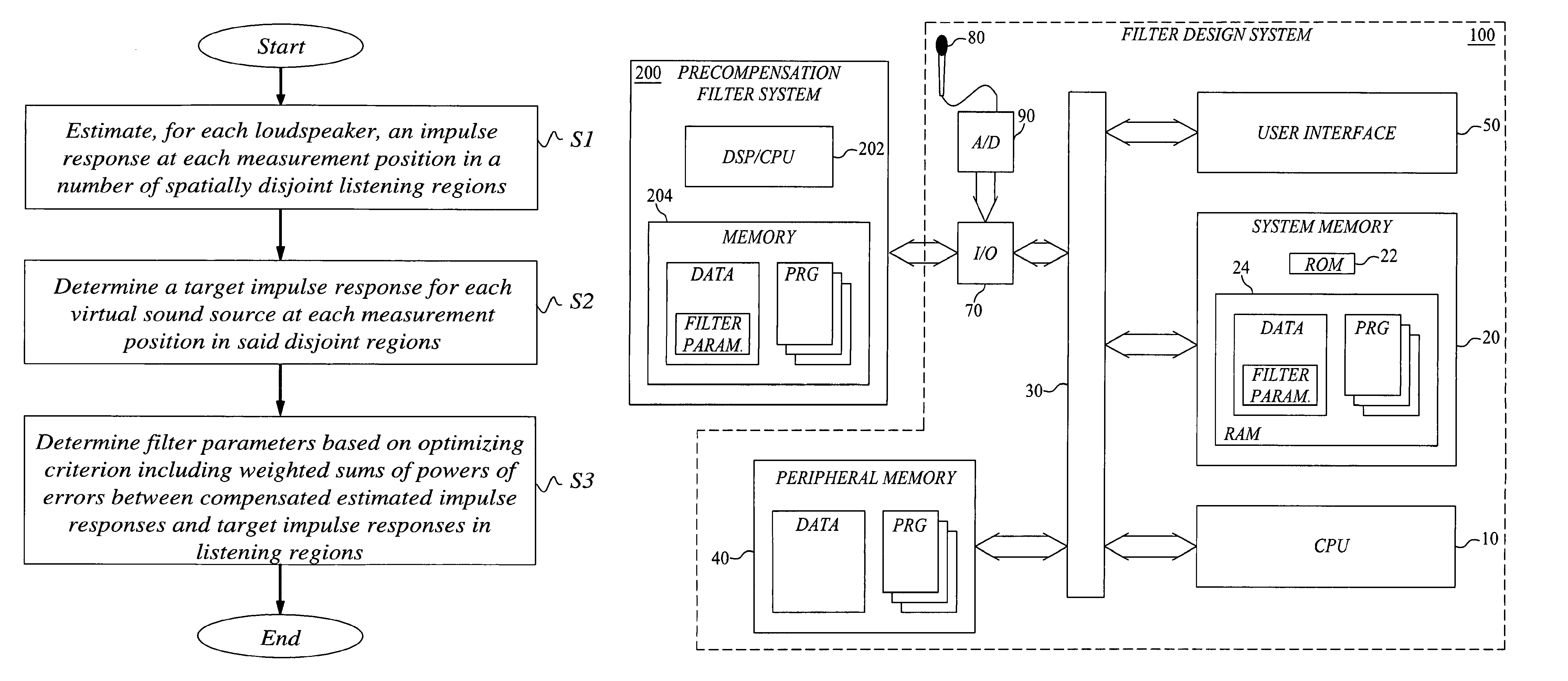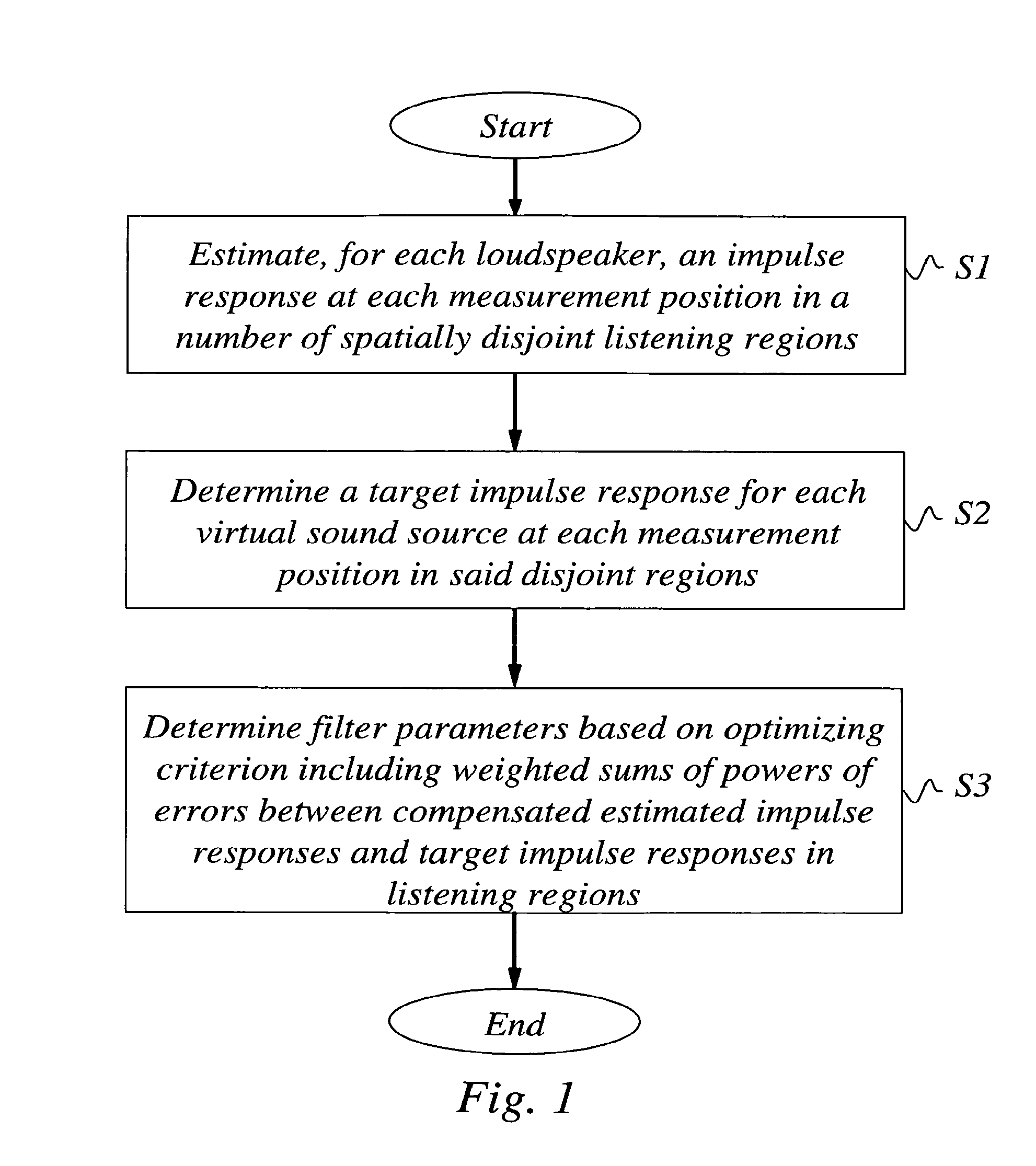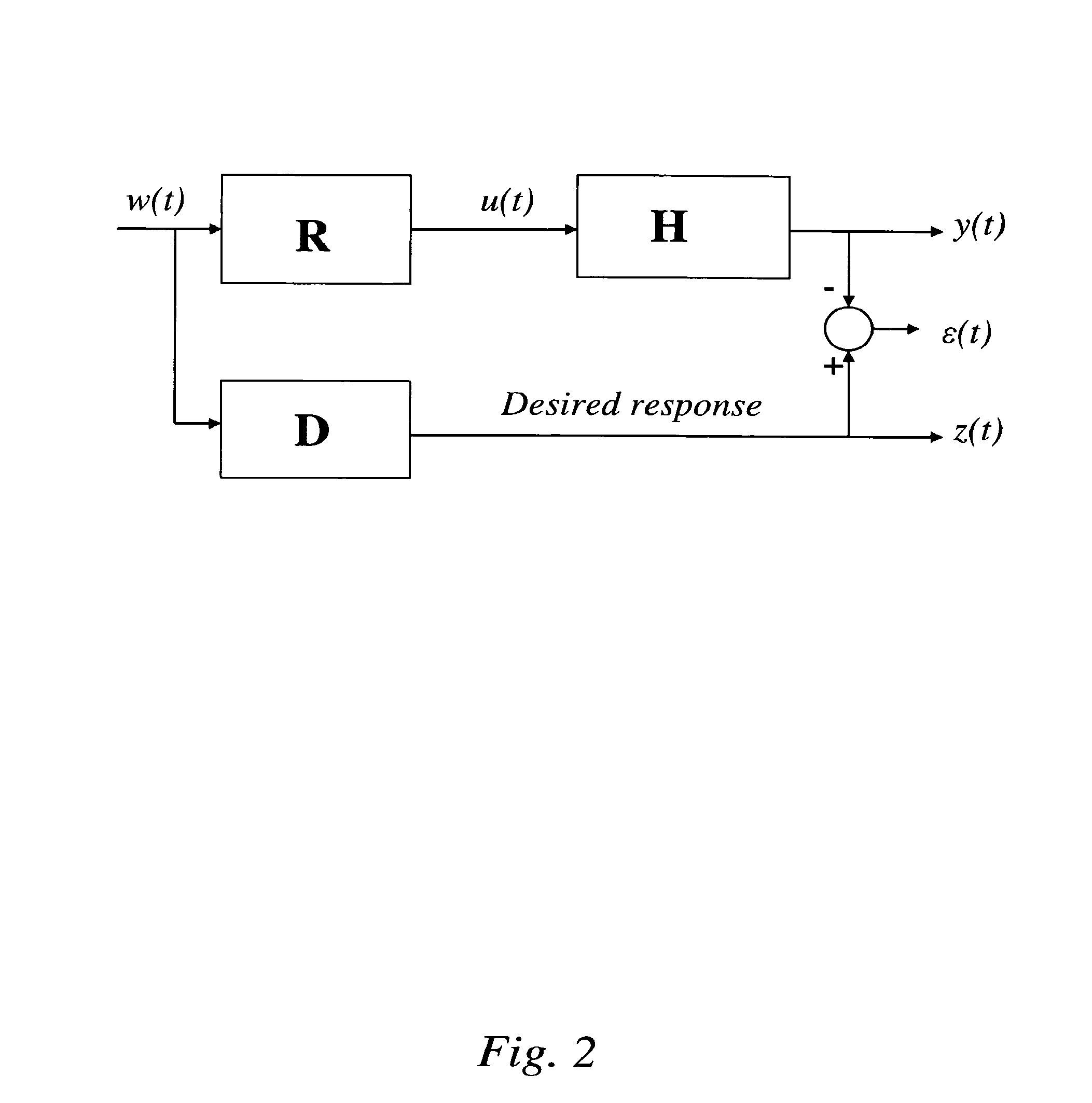Sound field control in multiple listening regions
a technology of sound field control and listening region, applied in the direction of electric digital data processing, instruments, electrical apparatus, etc., can solve the problems of difficult to solve car audio systems, unsuitable for reproduction over arbitrary spatial regions, and loudspeakers placed in inappropriate positions in audio systems
- Summary
- Abstract
- Description
- Claims
- Application Information
AI Technical Summary
Benefits of technology
Problems solved by technology
Method used
Image
Examples
Embodiment Construction
[0039]Throughout the drawings, the same reference numbers are used for similar or corresponding elements.
[0040]As mentioned, the present invention is based on the recognition that mathematical models of dynamic systems, and model-based optimization of digital precompensation filters, provide powerful tools for designing filters that improve the performance of various types of audio equipment by modifying the input signals to the equipment. It is furthermore based on the recognition that appropriate models can be obtained by measurements at a discrete grid of M listening positions, with a plurality of listening positions located in each of the P listening regions.
[0041]A first key insight is that a solution can be regarded as acceptable for practical applications if we alleviate the requirement on perfect reconstruction of the target sound field and further limit our target to cover only a finite number of measurement positions. By sampling the sound field at a limited number M of po...
PUM
 Login to View More
Login to View More Abstract
Description
Claims
Application Information
 Login to View More
Login to View More - R&D
- Intellectual Property
- Life Sciences
- Materials
- Tech Scout
- Unparalleled Data Quality
- Higher Quality Content
- 60% Fewer Hallucinations
Browse by: Latest US Patents, China's latest patents, Technical Efficacy Thesaurus, Application Domain, Technology Topic, Popular Technical Reports.
© 2025 PatSnap. All rights reserved.Legal|Privacy policy|Modern Slavery Act Transparency Statement|Sitemap|About US| Contact US: help@patsnap.com



